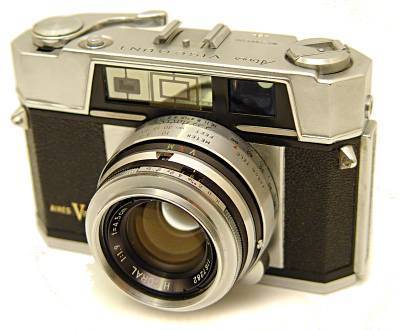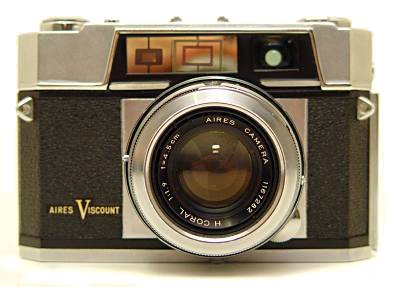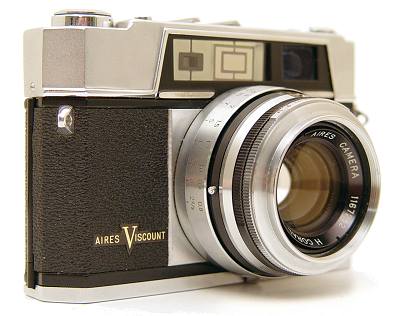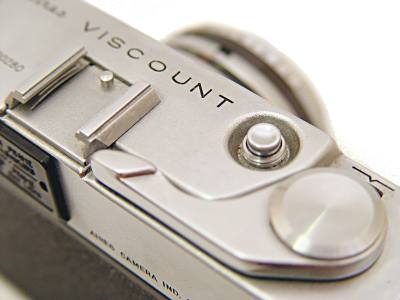|
Aires is a japanese company that strived for highest workmanship, it is said that they took the Leica M3 as an example what concerns the technical quality of their products. Indeed, the feel of all Aires models I know is extraordinarily solid - it really seems that every camera the company has produced is a sound piece of work. The Aires Viscount is a rangefinder with a rather classical appeal. The shape of the housing and the controls is very pleasingly designed. I am particularly fond of the winding lever, which nicely harmonizes with the shape of the top cover. The engravings on the top are set tastefully in size and font. The camera is very heavy for its size, all the controls move without play, and the shutter and winding sounds are a pleasure for the ear. The Aires Viscount has a fixed lens with a focal length of 45mm (the engraving in an old fashioned manner says f=4.5cm) and an aperture of 1:1.9. The lens is an H Coral, also used in other Aires models, e.g. the 35-IIIL. The shutter speed and aperture are set via ring controls on the lens barrel. The speeds range from 1 sec to 1/500 sec plus B and the smallest aperture is f/16. You can easily turn the aperture ring alone, but if you change the shutter speed, due to its very narrow dial ring, you unavoidably turn the aperture ring as well. This coupling is such that the EV value is kept constant. Accordingly, the current EV value is shown in a little window on the lens barrel. The designers of the Viscount have obviously had a certian operation mode in mind - the photographer firstly selects the correct aperture for a given shutter speed such that the correct exposure is obtained. Subsequent changes in the aperture-time combination can then easily be made by turning both dials at constant EV value without changing the exposure conditions. This principle was followed even more striclty in the Aires 35-IIIL, where the two selection rings have to be actively decoupled by the operator. The viewfinder is very bright and shows two sets of framelines - for the 45mm lens ("golden frame") and for 80mm (red frame). The latter focal length is obtained with an optional accessory lens to be screwed into the filter thread. On the lens barrel next to the 45mm distance scale (with depth-of-field marks) one finds an additional distance scale for the 80mm. The finder framelines have no automatic parallax correction, there are only some marks for the 45mm. For the 80mm obviously parallax marks are not necessary since the closest focusing distance is 2.5 meters. The distance-meter spot is pink and a little weak in my specimen. The back door is opened in a conventional manner via a slide on the side of the camera and not by lifting the rewind-spool lever. There is no connection for a cable release. Another salient feature is found when looking into the lens. The shutter blades are brown and not grey as usual and they seem to have a very smooth surface. The aperture blades are grey. The Aires Viscount has no built-in light meter. A handheld meter or your intuition is demanded. However, this has the advantage that no batteries are required and hence all related problems are avoided. The camera is also equipped with a self timer, which is acitvated via another barrel ring also used for the selection of the X or M flash mode. This implies that the self timer cannot be used simultaneously with a flash.
|
|






